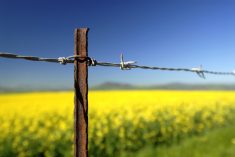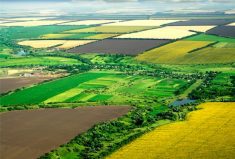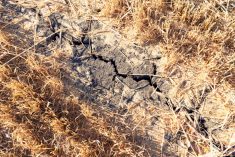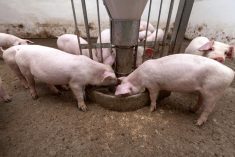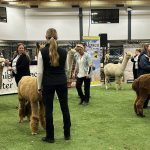On the small island of Meares off the West Coast of Canada there is a herd of wild cattle.
They are a cross of Shorthorn, Hereford and Jersey and the offspring resemble a long-legged red and white calf. What is unique about these cattle is their diet. Just as the coastal wolves are fishing wolves, these cattle also depend on the sea, eating eelgrass and seaweed.
Eelgrass is a perennial flowering plant found on the bottom of shallow bays and estuaries and accessible only at low tide. Seaweed has many different forms and can be grazed off the beach at low or high tide.
Read Also
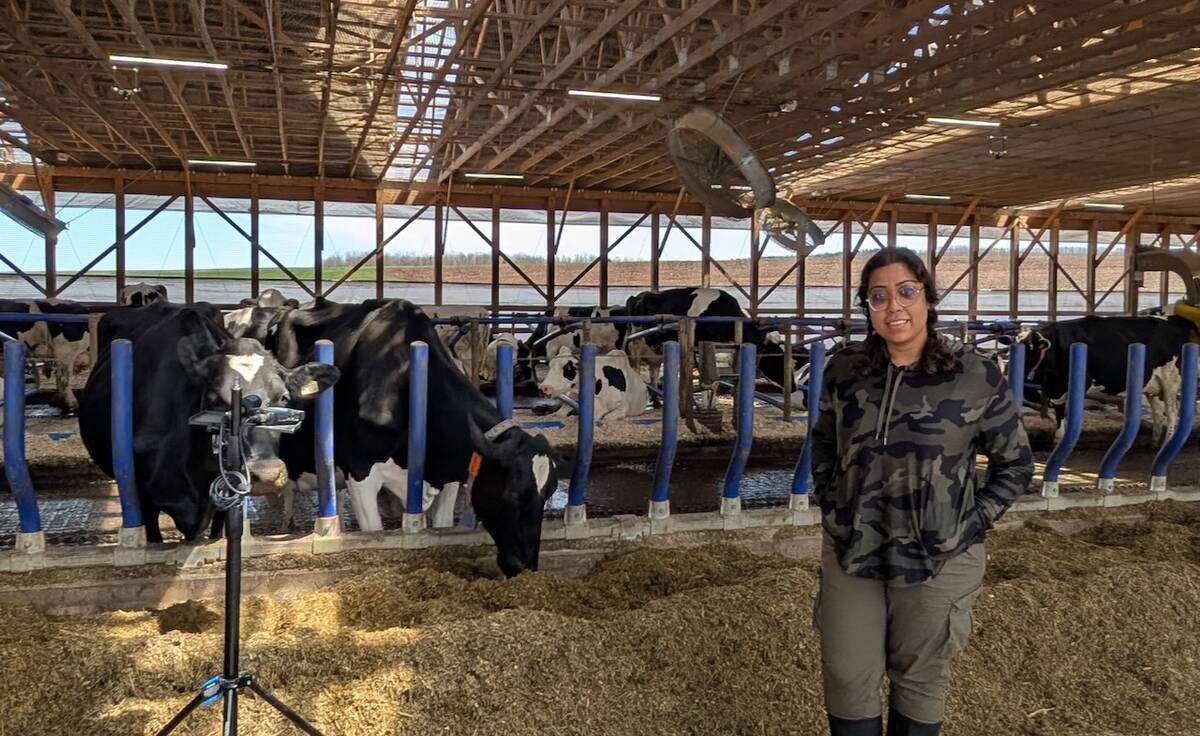
Moo translator and methane measures: There’s an app for that
Dalhousie University researchers use artificial intelligence to create new dairy farm apps that analyze cattle sounds and measure methane.
Packed with nutrients, the cattle prefer the feed from the sea over grass or hay. These wild bovines may run like the wind and decorate the coastal community. Their diet however, is attracting international attention in the area of methane gas mitigation.
Since the idea was launched that livestock are a major contributor of methane and global warming, there has been a raft of data gaps, bad science and feeding schemes. (One calculation of bovine methane emissions was determined by estimating the number of methane-producing chickens that could be stuffed into one mature cow.) Not only was the research deeply flawed (and not reflective of the differences between a chicken and a cow), it perpetuated a challenge that the industry has faced ever since.
Fast-forward to 2022 where solid research accurately confirms that cattle do emit methane, a greenhouse gas (the others are carbon dioxide and nitrous oxide). However, there is a difference between biogenic methane which is a flow gas produced in ruminants and the CO2 produced from fossil fuels which is a stock gas. A flow gas has a short lifespan and a stock gas has a much longer lifespan.
- More wth Brenda Schoepp: Rising input costs offer a chance to rethink our approach
Stock gas, such as CO2, has an extensive life in the atmosphere of about 1,000 years compared to flow gas which is recycled every 12 years. Flow gas is produced by ruminants and plants and taken out of the atmosphere returning to the soil or the sea as carbon. Stock gas sits in the atmosphere adding a warming effect.
The fossil fuel industry leads in stock gas emissions, with its CO2 emissions estimated to account for 72 to 87 per cent of all greenhouse gases. (Other major sources are heat and electricity production, transportation, manufacturing, landfills and forestry.) It is these stock gas producers that are contributing to global warming because there is no natural cycle or sink. Buying carbon credits will not change the outcome.
If you have ever wondered why big corporate emitters want to buy soil carbon credits, it is because there is no place for those stock gas emissions to go. What comes from a biogenic gas, such as methane, is naturally absorbed after 12 years because it is recycled carbon. The natural cycle can absorb flow gases — an ecological balance.
The pressure is on farmers to sell carbon credit to large emitters, without understanding that the land becomes a dumping ground for emissions outside of their industry, out of their control and in turn overwhelms the natural ability of that space to keep the carbon cycle in play.
Even so, researchers turned to seaweed when seeking answers on overall methane reduction in ruminants.
The results were stunning.
Seaweed has been proven to reduce methane output in ruminants at a level of anywhere from 40 to 80 per cent. Seaweed, nutrition and genetics will play a huge role going forward in livestock production — but these are not the answer to the climate calamity.
All of global agriculture, including deforestation for crops and cattle, contribute 10 per cent of all greenhouse gases. Agriculture uses just 1.7 per cent of all energy to produce food. A reduction of greenhouse gases by greater than 10 per cent — which is possible with biodigesters, solar, changes in feed and production practices, equipment and natural filtration — may result in agriculture being the only industry that is carbon neutral and contributing to the cooling of the Earth.
The wild cattle of Meares Island are part of an ecological balance and because of their diet, they may contribute to climate cooling, not decline.
The sea, the grasslands and the forests along with those that live in this habitat remain balanced with the methane they produce. It is the stock gases, such as CO2, that have no place to go and are warming the atmosphere. Eating less meat, feeding seaweed or ridding the Earth of ruminants does not preclude a reduction in overall greenhouse gases.
Only by addressing the heart of the issue — laying responsibility on those industries that produce stock gas which has a long-term warming effect — do we have a chance to lessen overall greenhouse gas emissions.
Agriculture must not bear the burden of cost for the stock gases produced by other industry nor can she sell short her invaluable carbon sink.




